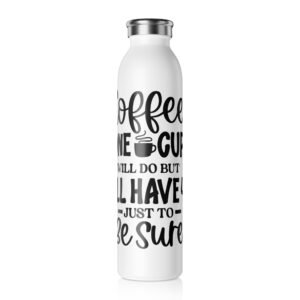Ever wondered why some habits stick like glue while others fizzle out after a few tries? Unlocking the secret behind our daily behaviors might be simpler than you think. It all comes down to three key ingredients: cue, routine, and reward work together. These elements work together like a trusty recipe, shaping the habits that can either boost our productivity, improve our well-being, or sometimes hold us back. In this post, we’ll break down how this powerful trio operates and explore how understanding their dance can help you build better habits—and maybe even break a few bad ones along the way. Let’s dive in!
Table of Contents
- Understanding the Power of the Habit Loop in Your Daily Life
- How to Identify Your Personal Cues for Better Habit Control
- Crafting Effective Routines That Stick Without Feeling Like Work
- Harnessing Rewards to Reinforce Positive Behavior and Stay Motivated
- In Conclusion
Understanding the Power of the Habit Loop in Your Daily Life
At the core of every habit lies a simple but powerful cycle that drives human behavior: a trigger sparks an action, which then leads to a rewarding experience. This sequence, often called the habit loop, can either propel you toward your goals or hold you back without you even realizing it. Understanding this loop means recognizing three essential components:
- Cue: The signal that initiates the behavior, such as a time of day, emotional state, or environment.
- Routine: The actual habit or action you perform in response.
- Reward: The positive reinforcement that encourages your brain to remember and repeat the cycle.
By becoming more mindful of these parts, you can start to intentionally shape your daily habits. For example, if your cue is feeling stressed after work, and your routine is reaching for unhealthy snacks, swapping in a walk or a few deep breaths can still satisfy the desire for relief (reward) but with lasting benefits. This deliberate awareness transforms habits from unconscious patterns into tools you can control, revealing the true potential of the habit loop as a gateway to personal growth and lasting change.
How to Identify Your Personal Cues for Better Habit Control
Understanding what triggers your habits is the first step toward mastering them. Personal cues often come disguised as everyday moments or feelings that prompt automatic behavior. To uncover these hidden signals, start observing your environment and emotional state right before the habit kicks in. Are you reaching for a snack when stressed? Do you scroll your phone out of boredom? By paying close attention, you can pinpoint whether time of day, location, company, or specific emotions act as your unique habit cues.
Once you’ve identified these triggers, you can take control in a few practical ways:
- Alter your environment: Change or remove objects associated with the habit to weaken the cue’s effect.
- Create new mini-routines: Insert small, positive actions right after the cue to redirect your behavior.
- Use visual reminders: Sticky notes, alarms, or digital prompts can reinforce awareness when a cue arises.
- Practice mindfulness: Cultivate present-moment awareness to catch the cue before reacting automatically.
By transforming your relationship with these personal cues, you gain a powerful edge in reshaping habits toward healthier, more productive patterns.
Crafting Effective Routines That Stick Without Feeling Like Work
To create routines that genuinely stick, it’s essential to design them so they feel natural, almost effortless. One approach is to start small—build mini habits that are easy to accomplish and gradually expand them. This prevents overwhelm and keeps motivation high. Another secret is to weave enjoyment directly into the process by associating your routine with something you love. For instance, listen to your favorite podcast while exercising or brew a cup of your favorite tea before diving into a focused work session. When you attach positive feelings to the action, the brain starts looking forward to the behavior, turning effort into pleasure.
Keeping your routine flexible also plays a crucial role in long-term adherence. Instead of a rigid “all-or-nothing” mindset, think of your routine as a spectrum of options you can mix and match daily. Having a fallback version of your routine for busy or low-energy days ensures you don’t break the habit loop. Embrace this adaptability by creating a list of easy swaps and alternates, such as:
- Shortened workouts instead of skipping exercise.
- Journaling for five minutes when you can’t write extensively.
- Mindful breathing instead of a full meditation session.
By prioritizing enjoyment, starting small, and allowing for flexibility, your routines start to feel less like work and more like an intentional lifestyle choice.
Harnessing Rewards to Reinforce Positive Behavior and Stay Motivated
The secret sauce in habit formation often lies in the reward system. When you consciously pair a positive outcome with your desired routine, your brain starts to crave that feeling of satisfaction. Think of it like this: the reward is a signal telling your mind, “Hey, this behavior is worth repeating!” Whether it’s the thrill of checking off a task, the joy of a small treat, or even a moment of relaxation, these rewards wire your habits into a loop that becomes harder to break. The key is to make your rewards meaningful — something that genuinely motivates you to keep going without feeling like a chore.
To make rewards work for you, try mixing them up or creating mini celebrations after completing your habit. Incorporate simple strategies like:
- Setting aside a few minutes for your favorite hobby as a reward
- Using visual trackers that light up your progress
- Allowing yourself a guilt-free break or treat
- Sharing your success with a friend to boost accountability
When rewards resonate personally and are consistently paired with your routine, they not only reinforce positive behavior but also keep your motivation burning bright in the long run.
In Conclusion
And there you have it—a simple yet powerful framework for understanding how habits shape our daily lives. By recognizing the cue, tuning into the routine & reward work, and savoring the reward, you hold the keys to unlocking lasting change. Whether you’re looking to break a bad habit or build a better one, remembering this trio can help you take control with kindness and curiosity. So next time you catch yourself slipping into autopilot, pause and ask: What’s my cue? What’s the routine? What am I really craving? With these questions in hand, you’re well on your way to crafting habits that serve you—and making every day a little bit brighter. Happy habit hacking!
Related Products
-
Sale!
Frida Mom 2-in-1 Postpartum Pads, Absorbent Perine…
Mom Original price was: $19.99.$15.19Current price is: $15.19. -
John Deere Bubble Lawn Mower for Toddlers, Bubble …
Kids $29.99 -
Hanes Men’s EcoSmart Fleece, Pullover Crewneck Swe…
Clothing $9.31






